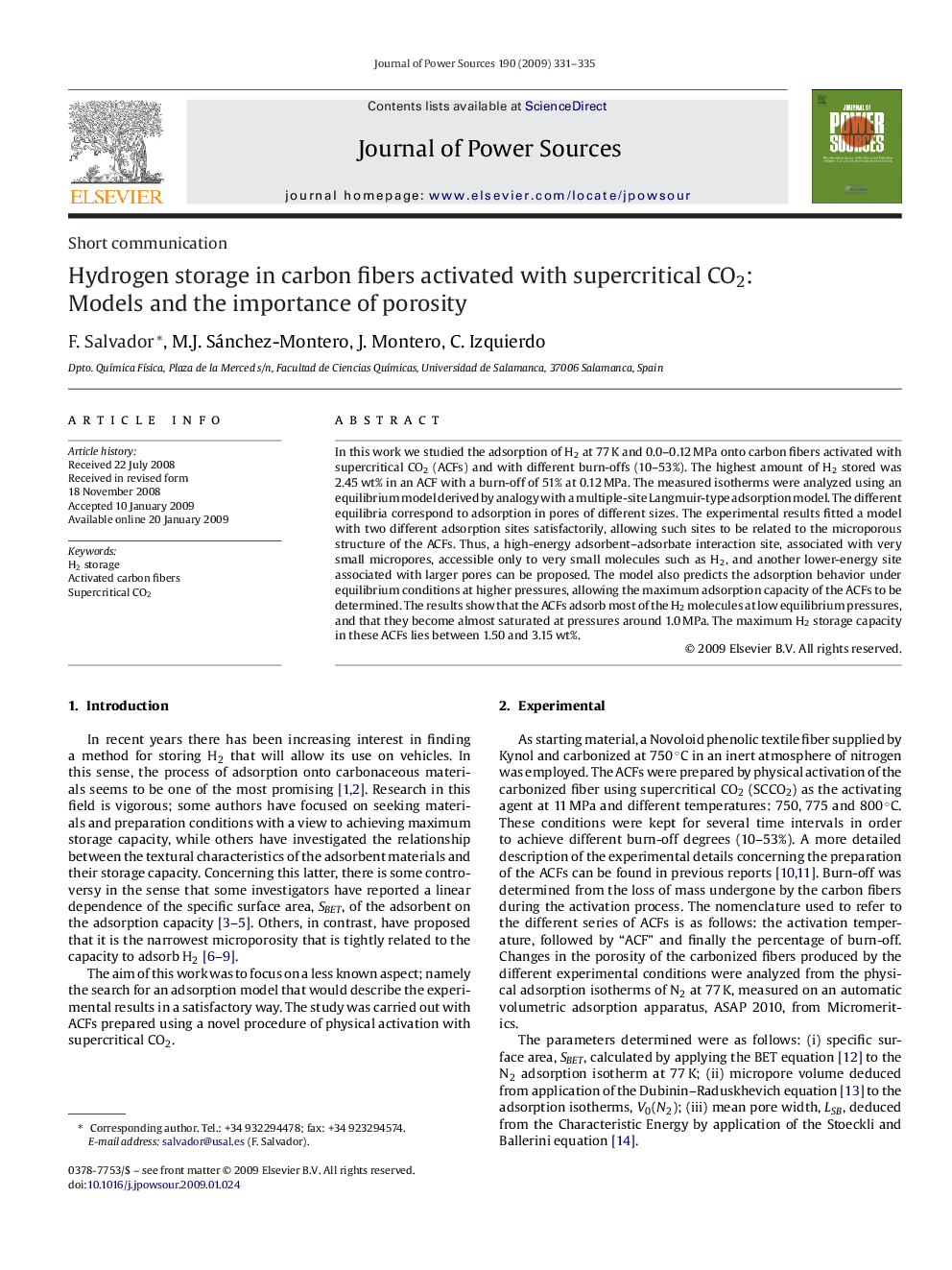| Article ID | Journal | Published Year | Pages | File Type |
|---|---|---|---|---|
| 1290833 | Journal of Power Sources | 2009 | 5 Pages |
In this work we studied the adsorption of H2 at 77 K and 0.0–0.12 MPa onto carbon fibers activated with supercritical CO2 (ACFs) and with different burn-offs (10–53%). The highest amount of H2 stored was 2.45 wt% in an ACF with a burn-off of 51% at 0.12 MPa. The measured isotherms were analyzed using an equilibrium model derived by analogy with a multiple-site Langmuir-type adsorption model. The different equilibria correspond to adsorption in pores of different sizes. The experimental results fitted a model with two different adsorption sites satisfactorily, allowing such sites to be related to the microporous structure of the ACFs. Thus, a high-energy adsorbent–adsorbate interaction site, associated with very small micropores, accessible only to very small molecules such as H2, and another lower-energy site associated with larger pores can be proposed. The model also predicts the adsorption behavior under equilibrium conditions at higher pressures, allowing the maximum adsorption capacity of the ACFs to be determined. The results show that the ACFs adsorb most of the H2 molecules at low equilibrium pressures, and that they become almost saturated at pressures around 1.0 MPa. The maximum H2 storage capacity in these ACFs lies between 1.50 and 3.15 wt%.
